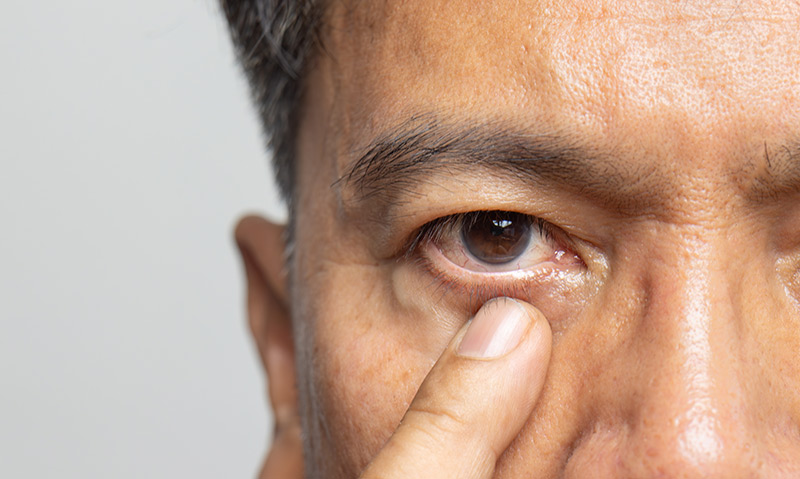Cataract formation is primarily due to aging and can begin by age 50. However, it isn't unusual for patients under 50 to develop cataracts due to underlying medical conditions like diabetes, medications, family history, or without reason. Other causes include trauma, medications such as steroids, systemic diseases such as diabetes and prolonged exposure to ultraviolet light. Occasionally, babies are born with a cataract. Wearing sunglasses may reduce your risk for developing a cataract by limiting exposure to ultraviolet light. However, once a cataract has developed, the only cure is surgical removal. It is time to have surgery when your vision interferes with your lifestyle.


Although the formation of a cataract can make activities such as reading and driving difficult, good vision can be safely restored with outpatient cataract surgery. Now, with the development of no-stitch, a small-incision procedure, patients are experiencing a faster recovery.
Cataracts can create symptoms including:
Click on the symptoms below to see a visualization.






Cataract surgery is the most common surgery in America. Our physicians remove the cataract through a small incision using an advanced technique known as phacoemulsification. Ultrasound energy is used to break up the cloudy lens material and remove it from the eye. A new plastic lens replaces the clouded one. Usually, this lens will last you the rest of your life. This lens correctly focuses light to the back of the eye. As with any surgical procedure, complications can occur during or after surgery and some are severe enough to limit vision. However, the overwhelming majority of patients are pleased with the improvement of both their vision and quality of life. Out of the one and a half million people who have this procedure every year, 95% have a successful result.

Carolina Centers for Sight is excited to offer laser-enabled cataract surgery featuring Alcon’s LenSx® laser. This innovative laser enhances cataract surgery with unrivaled precision and individualization. The pioneering technology incorporates computer control into vital steps of the procedure, providing cataract patients with the most advanced surgical option available.

Stitch-free cataract surgery facilitates rapid recovery with reduced discomfort and improved vision without the necessity for stitches. Our cataract surgeons skillfully create a small incision at the edge of the cornea, allowing them to remove the cataract and implant the IOL without the need for stitches. The area will naturally heal and close, minimizing discomfort and irritation that can sometimes occur with stitches.

If you think you might need cataract surgery, the first step is to have a comprehensive eye examination. Your doctor will be able to determine if a cataract is the cause of your decreased vision. If it is, and if it is inhibiting your quality of life and the activities that bring you joy, then our surgeons can help you determine which cataract surgery option is best for your eyes and lifestyle.
Once you have cataract surgery, you cannot change your mind to upgrade to a premium lens implant. That is why it is so important to really think about this decision ahead of time. At Carolinas Center for Sight, we strive to answer all your questions and help you through this decision process. We understand that your lifetime of good vision depends on it.
Medicare and most health insurance plans cover the cost of basic cataract surgery, excluding deductibles, coinsurance and copays. If you are interested in an advanced lens implant or laser cataract procedure than an additional payment is required. If you’re a Clemson Eye patient, you have the option of 24‑month, 0% payment plans for any out of pocket expenses.
Our highly experienced cataract surgeons always take the time to discuss the best possible surgical solutions for your visual health and individual situation. They’ve performed over 100,000 cataract operations, and all offer basic and advanced laser cataract surgery to restore your best vision. After your consultation, our surgical team will provide you details of your visual and financial options. Supporting a cataract procedure that is customized to meet your lifestyle visual needs is our goal.
In most cases, we schedule cataract surgery for each eye 1-2 weeks apart, assuming both eyes need surgery. However, in some situations, bilateral cataract surgery is necessary and scheduled.
You will usually be at the surgery center for about 2 hours, but on average the surgery only takes about 1 minutes.
In most cases, general anesthesia (put to sleep) is not necessary to perform cataract surgery. Our anesthesia team will provide some light sedation to help you relax. Numbing drops ensure you will not have any pain. For the short procedure, you will be awake and likely will not remember the surgery.
No. Eye drops are used to numb the eye and patients often see a spectrum of colored lights.
Many will feel comfortable driving, but there are also many who may have an imbalance between their eyes after their first surgery. Those who have an imbalance and reduced depth perception are encouraged to limit driving during the week between surgeries. In addition, caution should be taken while walking up and down stairs and curbs after the first eye if the depth perception is initially reduced.
The most important thing is not to rub your eye. You will need to wear a clear, plastic shield at night for the first week to help protect the eye. Although the risk of infection is rare, we also ask you to avoid swimming in pools and hot tubs for the first two weeks.
Our surgeons and doctors are among the most experienced in the world.
Schedule An Appointment